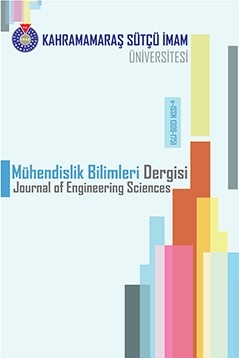Utilization of Recycled PET Flours in Recycled Polyvinyl Chloride (PVC) Composites
Utilization of Recycled PET Flours in Recycled Polyvinyl Chloride (PVC) Composites
___
- Anonim (2007), Standard Test Method for Density and Specific Gravity (Relative Density) of Plastics by Displacement, ASTM D 792, Annual Book of American Society for Testing and Materials (ASTM) Standards, Philadelphia.
- Anonim (2003), Standard Test Methods for Flexural Properties of Unreinforced and Reinforced Plastics and Electrical Insulating Materials, ASTM D 790, Annual Book of American Society for Testing and Materials (ASTM) Standards, Philadelphia.
- Anonim (2001), Standard Test Method for Tensile Properties of Plastics, ASTM D 638, Annual Book of American Society for Testing and Materials (ASTM) Standards, Philadelphia.
- Anonim (2000). Standard Test Methods for Impact Resistance of Plastics and Electrical Insulating Materials, ASTM D 256, Annual Book of American Society for Testing and Materials (ASTM) Standards, Philadelphia.
- Fukushima, M., Wu, B., Ibe, H., Wakai,K., Sugiyama, E., Abe, H., Kitagawa, K., Tsuruga, S., Shimura, K., Ono, E., (2010). Study on dechlorination technology for municipal waste plastics containing polyvinyl chloride and polyethylene terephthalate, J Mater Cycles Waste Manag, 12:108–122.
- Jong-Pil Won, J-P., Jang, C., Lee, S-W., Lee, S-J., Kim, H-Y.,(2010). Construction and Building Materials, Construction and Building Materials 24 660–665
- Kıralp, S., Özkoç G., Erdoğan, S., Çamurlu, P., Doğan, M., Baydemir, T., (2007). Modern Çağın Malzemesi Plastikler, ODTÜ Bilim ve Toplum Kitapları Dizisi ODTÜ Yayıncılık.
- Makkam, S.AND Harnnarongchai, W., (2014).Rheological and Mechanical Properties of Recycled PET Modified by Reactive Extrusion, ENERGY PROCEDIA 56 547 – 553.
- Mengeloglu, F., Karakus, K., (2008) ʺ Polymer-Composites from Recycled High Density Polyethylene and Waste Lignocellulosic Materialsʺ, Fresenius Environmental Bulletin, Vol.17-No 2.
- Santos, R. P. O., Rodrigues, B. V. M., Ramires, E. C., Ruvolo-Filho, A. C.,Frollini, E., (2015). Bio-based materials from the electrospinning of lignocellulosic sisal fibers and recycled PET, Industrial Crops and Products 72 69–76.
- X Colom, J Can˜avate, F Carrillo and MJ Lis., (2014) ʺ Acoustic and mechanical properties of recycled polyvinyl chloride/ground tyre rubber compositesʺ, Journal of Composite Materials, Vol. 48(9) 1061–1069.
- Başlangıç: 1998
- Yayıncı: Kahramanmaraş Sütçü İmam Üniversitesi
Kahramanmaraş Bölgesi İçin Güneş ve Rüzgâr Enerjisi Hibrit Sisteminin İncelenmesi
İsrafil KARADÖL, Ö. Fatih KEÇECİOĞLU, Hakan AÇIKGÖZ, Mustafa ŞEKKELİ
Kahramanmaraş Hava Kirliliği Kaynaklarının İzlenmesi ve Belirlenmesi
Mehmet Hakan MORCALI, DİLAN SÜMEYYE AKAN
Anaerobik Membran Biyoreaktörde TMP-Akı Değerlendirmesi
Serdar GÖÇER, Dilek AKMAN, Kevser CIRIK
Utilization of Recycled PET Flours in Recycled Polyvinyl Chloride (PVC) Composites
İlkay ATAR, Kadir KARAKUŞ, İbrahim Halil BAŞBOĞA, Fatma BOZKURT, Fatih MENGELOĞLU
Ali ÖTER, Osman AYDOĞAN, Deniz TUNCEL
Yerel Elektrik Santrallerin Dağıtım Şebekelerinin Kararlılığına Etkisinin İncelenmesi
Zeynel BAŞ, Ayşe İNCESU, Ahmet Serdar YILMAZ
Kan ve Organ Bağışı Mobil Yönetim Sistemi
Hussein SALEEM, İbrahim Taner OKUMUŞ
Mohammed QOJA, İbrahim Taner OKUMUŞ
Screw and Nail-Holding Capacities of Combi Plywood Produced From Eucalyptus, Beech and Poplar Veneer
Bekir BAL, Hasan ORHAN, Tuncay BOSTAN
Model Verification For A Brushed DC Motor Running In Closed Loop With Speed Feedback
